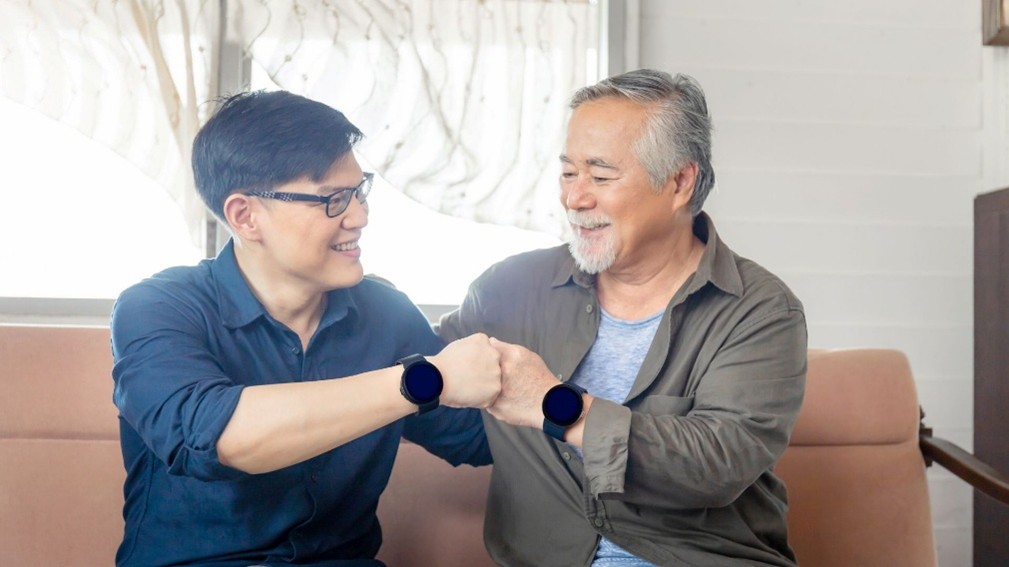
As a father, you’ve spent many years looking after your family. Now that your children are grown, this new stage of life offers a chance to focus on your health — and reconnect with them in a different way.
Taking care of your well-being doesn’t have to be something you do alone. In fact, making healthy lifestyle changes together with your adult child can be a meaningful way to stay active, support each other, and build new memories along the way.
Health and Family: More Connected Than You Think
Here are some simple and sustainable ways you can start to build connection while investing in your health.

1. Walk Together with Purpose
Walking may seem simple, but it’s one of the best exercises for men over 40. It’s gentle on the joints, improves heart health, and helps manage weight, blood sugar, and cholesterol.
Instead of going solo, invite your child for a weekly morning or evening walk. Choose a nearby park, nature trail, or even a walking trail in your HDB neighbourhood. Don’t focus on speed or distance, instead, focus on conversation.
Want to make it more meaningful? Consider taking part in a charity walk. Walking with purpose, whether it’s for a cause or for health milestones, can give both of you something to look forward to.

2. Cook and Eat Healthier Together
Why not invite your child over for a fun weekly cook-and-dine session? Revisit family recipes and rework them with healthier ingredients. For instance, swap white rice with brown rice, or use less oil when frying. Cooking together can also be a fun way to share stories, pass on traditions, and learn new things from each other.
In fact, shared family meals are linked to better food choices, more fruit and vegetable intake, and even better mental health³.

3. Track Progress Together with Fitness Apps or Gadgets
Technology can be a great way to stay motivated—especially when it becomes a shared activity. Try using simple fitness trackers or apps (like Healthy 365, Apple Health, or Google Fit) to set weekly step or activity goals. You can create fun challenges together like:
- “Who can hit 10,000 steps first each day?”
- “No-sugar week”
- “One new vegetable added per meal”
Not only does this build a light sense of accountability, but it also sparks casual check-ins that strengthen your bond with your adult child.
Tip: Don’t be afraid to ask your child to help you set up a fitness app or wearable device. You’ll not only learn something new, you’ll also get a glimpse into their world.

4. Go for Health Screenings Together
Sometimes, the best way to break the habit of delay is to do something as a team.
Health screenings can help detect conditions early, when they are easier to treat. Many fathers put off going to the doctor until something feels wrong, but prevention is always better than cure.
Use this Father’s Day as a reason to book a health screening appointment for you and your child — whether it’s a full blood test, blood pressure check, or cholesterol screening. If you’re aged 40 and above and a Singapore Citizen, enrolling in Healthier SG gives you access to free screenings and annual health check-ins with your doctor.
Tip: Don’t wait for symptoms. Go for regular checks, even if you “feel fine” — especially if you have a family history of heart disease, diabetes, or stroke.
Your Health is the Best Legacy
Your children may be grown, but they still look up to you. The habits you build today, no matter your age, can become an inspiring example for them.
This Father’s Day, give your family the gift of a healthier, more present you. Walk together. Cook together. Get checked together. And most importantly, keep showing up — physically and emotionally.
References:
- Ministry of Health Singapore (2023). Chronic Disease Management in Older Adults.
- Smith, G.L., Banting, L., Eime, R., et al. (2017) The association between social support and physical activity in older adults: a systematic review. International Journal of Behavioral Nutrition and Physical Activity. Available at: https://doi.org/10.1186/s12966-017-0509-8 (Accessed: 30 May 2025)
- Dallacker, M., Hertwig, R., & Mata, J. (2018). The frequency of family meals and nutritional health in children: a meta-analysis. Obesity Reviews. Available at: https://doi.org/10.1111/obr.12659 (Accessed: 3 June 2025)




